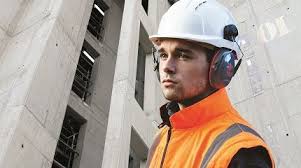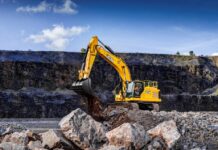It’s not just factory shop floors and offices that can be noisy environments. Construction sites can be equally as bad. Research on noise induced hearing loss (NIHL) shows around a fifth of the British working population could be exposed to high noise levels while doing their job.
While Britain has seen new cases of occupational deafness significantly drop over the past decade, the Health and Safety Executive (HSE) is urging workplaces to consider the shout test to manage noise at work and ways to give workers’ ears a break.
HSE’s noise expert Chris Steel said: “If you are shouting at work and can’t be heard from two metres away, the chances are there’s a noise issue. Try it out for yourself and see if you can be heard. Preserving hearing at work is crucial as noise can cause temporary or permanent hearing damage.
“But there needs to be a balance. While too little noise reduction could cause hearing damage, too much could isolate the worker and lead to accidents.”

The report goes on to say that while there are limited statistics on the prevalence of noise induced hearing loss (NIHL) in Britain, the most likely affected groups of workers are those who have been employed in the armed services, shipyards, construction, and agriculture.
HSE has important guidance in relation to noise at work although evidence suggests new cases of occupational deafness is in decline.
Chris Steel continued: “People often experience temporary deafness after leaving a noisy place like a nightclub or a bar. Although hearing recovers within a few hours, this should not be ignored. It is a sign that if they continue to be exposed to the noise, without an adequate break, their hearing could be permanently damaged. The same applies to noise in a workplace.
“While the prevalence of occupational noise induced hearing loss has decreased over the last forty years, mostly through noise control technology, the dangers still need to be taken seriously.”
Bosses must assess and identify measures to eliminate or reduce risks from exposure to noise so that they can protect the hearing of their workers.
If you are already using hearing protection, it needs to be managed so try using CUFF:
C = Condition; is the hearing protection in good condition?
U = Use: are workers using the hearing protection all the times they should be?
F = Fit; does the hearing protection fit the wearer?
F = Fit for purpose; have you selected hearing protection that gives the right level of noise reduction?
















